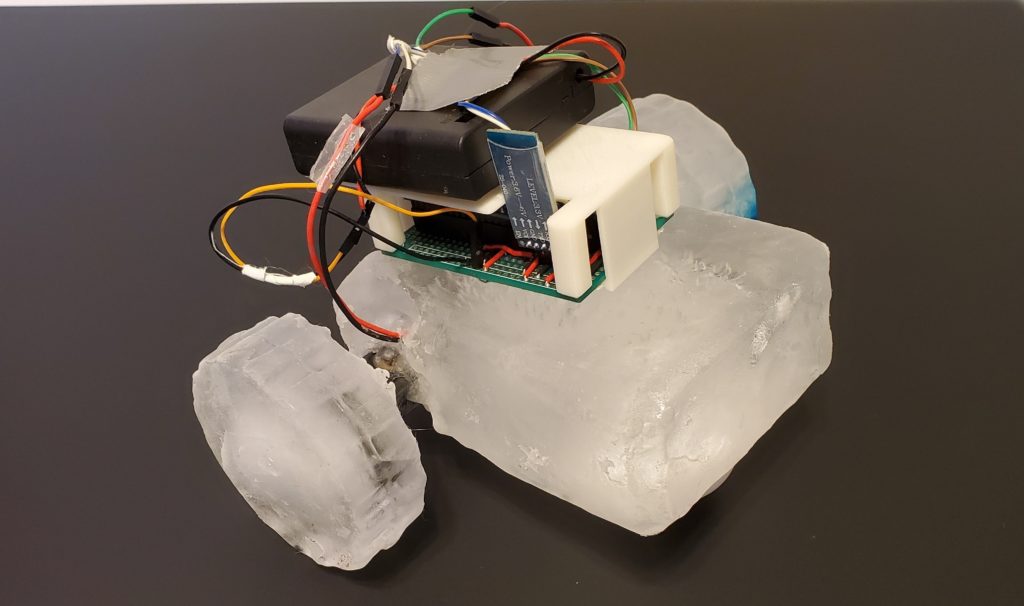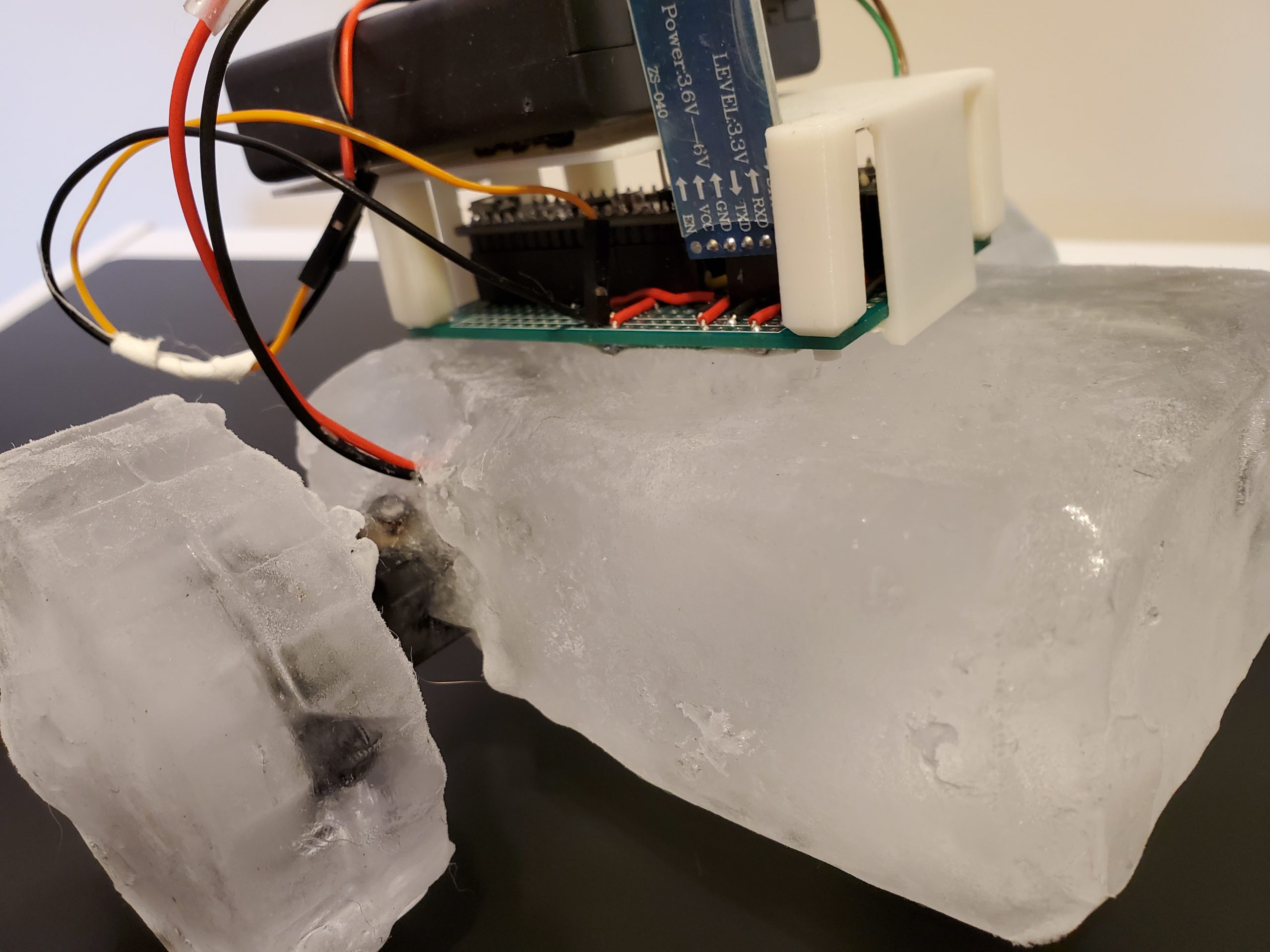
IceBot is the first robot made from ice, as confirmed by the Guinness World Records team. We intend for the robot to operate in harsh, remote, sub-zero environments like Antarctica and even further away, Saturn’s moon Enceladus for example. As the structural components of the robot are made from ice, when operating in these environments the robot has unlimited access to replacement structural material should it become damaged in some way.
We explore which manufacturing techniques should be employed to build the robot in the most energy efficient manner. For clarity, we divide the manufacture of the robot into two parts: creation of the structural blocks (e.g. wheels and the robot body) and integration of the actuator modules with the blocks of ice. In both cases, the techniques used to perform the manufacturing also fall into two classes: machining/cutting and heat-based methods. Generally machining methods were most optimal from an energy perspective but there are some scenarios, when creating the structural blocks of the robot, in which heat based methods are a better choice.
Creation of the Structural Blocks
We consider three manufacturing techniques to create the structural members for the robot: machining, 3D printing, and using molds. When operating in these different remote environments IceBot (or a robotic system working with our robot) will need to gather raw material in the form of ice blocks for construction or repair. Unless we are choosing to machine the structural components from these blocks of ice, they must be melted into water (a high energy operation) so that the system has material with which to 3D print or fill molds. These operations fall under additive manufacturing operations meaning the total energy cost is dependent on the size of the final component.
On the other hand, machining is a (comparably) low energy subtractive manufacturing operation which means the total energy cost is dependent on the amount of material we must remove from the raw material to realize the final component. Generally machining is the optimal manufacturing method, however there are cases when we are creating a small structural component from a large block of raw material where, from an energy perspective, 3D printing is the more optimal choice.
Integration of Actuator Modules
Actuator modules give the robot its functionality. Without them the robot would be an oversized block(s) of ice. To integrate the modules with the ice we make space for the module, whether through drilling or melting, locate the module, surround it with water, and allow that water to freeze the module in place. Each module consists of a motor and a plastic shell to protect the motor from water damage as well as give it greater resistance to any torques the motor may experience. In future iterations we envision this module being self-contained with an onboard power system and wireless communication to a central controller.
Heating the module and melting it directly into the robot body is the most energy efficient of the techniques we looked at. However the hot water runoff that resulted from this technique tended to deform other regions of the part and often led to unusable structural components. Hence for our proof-of-concept demonstration we drilled into the blocks of ice and fixed the actuator module in place as described above.
IceBot Capabilities
In our experiments we show IceBot is capable of operation in both sub-zero and room temperature environments, moving over ice, and is even able to climb slight (1.5°) icy inclines. Check out the video below for a summary of our paper and to see IceBot in action!
Publications:
-
![[PDF]](https://www.modlabupenn.org/wp-content/plugins/papercite/img/pdf.png) D. Carroll and M. Yim, “Robots made from ice: an analysis of manufacturing techniques,” in 2020 ieee/rsj international conference on intelligent robots and systems (iros), 2020, pp. 1933-1938.
D. Carroll and M. Yim, “Robots made from ice: an analysis of manufacturing techniques,” in 2020 ieee/rsj international conference on intelligent robots and systems (iros), 2020, pp. 1933-1938.
[Bibtex]@inproceedings{DC:MY:20, booktitle={2020 IEEE/RSJ International Conference on Intelligent Robots and Systems (IROS)}, title={Robots Made From Ice: An Analysis of Manufacturing Techniques}, author={Carroll, Devin and Yim, Mark}, year={2020}, volume={}, number={}, pages={1933-1938}, pdf = {https://www.modlabupenn.org/wp-content/uploads/2021/09/dcarroll_iros2020_icebot.pdf} }

Pingback:workout playlist
Pingback:relaxing sleep music
Pingback:jazz music
Pingback:relaxing music
Pingback:music for studying
Pingback:Hua Hin Thai restaurant
Pingback:depression therapist san diego